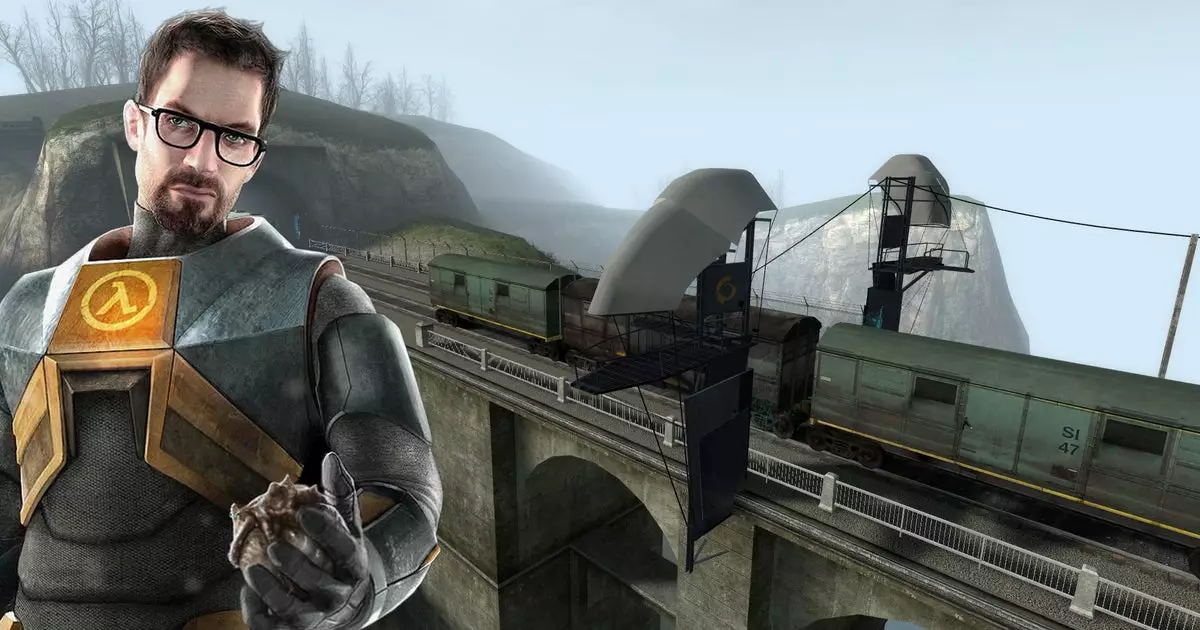Valve’s recent update to *Half-Life 2* underscores the enduring relevance of a game that has long since cemented its place in gaming history. While it may seem trivial on the surface—a slight adjustment to a train’s speed during the “Highway 17” segment—the action speaks to a much larger truth: timeless games are living entities, continually shaped and refined long after their initial release. This small patch, by restoring the train’s original pacing, serves as a reminder that developers remain committed to preserving the original experience, even decades later. It’s a gesture of respect toward dedicated fans who have kept the game alive through modding, speedrunning, and community engagement.
This act of tweaking isn’t about fixing egregious bugs or updating graphics; it’s about crafting an authentic experience. By re-aligning the train’s speed with the designer’s initial intentions, Valve subtly restores the the game’s delicate balance of challenge and rhythm. It demonstrates that despite technological advancements, the core fun and tension in *Half-Life 2* are still refined enough to warrant tinkering, ensuring players encounter the game as the creators envisioned—if only for a brief moment.
More Than Nostalgia: The Persistent Dedication to Quality
The patch’s other corrections might seem minor—fixing collision detection issues or NPC pathing problems—but these updates reflect a deeper devotion to the game’s integrity. The removal of a troublesome invisible wall that irked speedrunners a year ago is emblematic of the community-driven quality assurance that *Half-Life 2* continually benefits from. It’s a testament to the game’s active, passionate fanbase that persists in uncovering these little flaws and Valve’s willingness—if sometimes reluctantly—to address them.
Such fixes also speak to the game’s layered design. The collision issues, seemingly insignificant, can greatly impact gameplay precision—particularly for those who attempt to revisit the game with speedrunning ambitions. Valve’s micro-adjustments ensure that experienced players aren’t hindered by outdated physics or walls that, while invisible to most, obstruct the flow for the dedicated. It’s a delicate dance of preserving the authenticity of the past while accommodating the nuances players continue to explore.
The Myth of Aging and the Politics of Preservation
*Half-Life 2*’s continued updates challenge the misconception that old games become obsolete or irrelevant over time. Instead, they are dynamic artifacts, evolving through small modifications that respect their original design and appeal. These updates—whether fixing collision bugs, adjusting physics, or refining AI—are acts of preservation, ensuring the game remains accessible and enjoyable for new generations while rewarding longtime fans.
It’s a courageous stance against the inevitable march of technological obsolescence. Instead of abandoning their heritage, Valve appears committed to sustaining it. These micro-updates serve as a subtle but powerful assertion: the value of a game isn’t solely in its initial release but in its capacity to withstand the test of time through ongoing care. They also demonstrate that quality isn’t a one-and-done achievement; it’s a continuous process, a testament to a developer’s faith in their creation.
The Fan-Driven Legacy and the Future of Preservation
The ongoing refinements highlight the importance of community involvement in game preservation. Speedrunners, modders, and dedicated fans keep the game relevant and alive, often identifying imperfections that go unnoticed during initial releases. Valve’s willingness to implement these tweaks—not driven by massive budgets or corporate mandates but by a love for the game—exemplifies a model of stewardship that prioritizes authenticity over superficial updates.
In essence, *Half-Life 2* remains a living relic, continuously polished and maintained—an exemplar of how to treat a classic game that continues to inspire. It’s not merely a nostalgic relic; it’s a testament to the power of passionate communities and conscientious developers committed to keeping a game’s magic alive long after its original launch. Valve’s latest updates serve as a microcosm of this philosophy, reaffirming that some games, much like great art, only grow more valuable with time when they’re cared for with genuine dedication.

